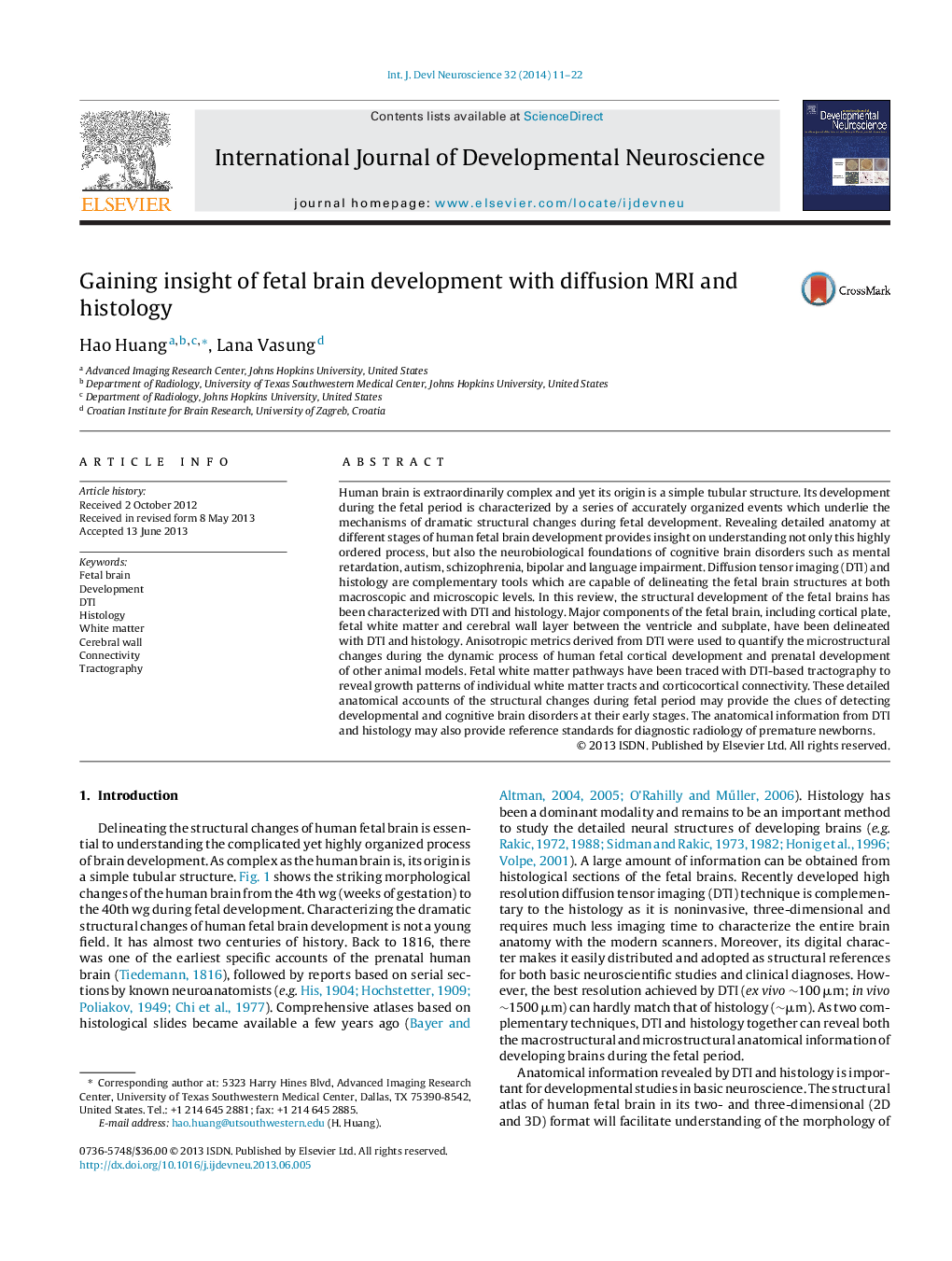| Article ID | Journal | Published Year | Pages | File Type |
|---|---|---|---|---|
| 2785918 | International Journal of Developmental Neuroscience | 2014 | 12 Pages |
•Fetal cerebral wall and white matter have been delineated with DTI and histology.•DTI and histology characterize the cerebral wall at macroscopic and microscopic levels.•Microstructural dynamics of fetal cortical development was quantified by DTI.•Differential fetal white matter growth pattern was revealed with DTI tractography.•Patterns of developmental fetal brain connectivity were reviewed.
Human brain is extraordinarily complex and yet its origin is a simple tubular structure. Its development during the fetal period is characterized by a series of accurately organized events which underlie the mechanisms of dramatic structural changes during fetal development. Revealing detailed anatomy at different stages of human fetal brain development provides insight on understanding not only this highly ordered process, but also the neurobiological foundations of cognitive brain disorders such as mental retardation, autism, schizophrenia, bipolar and language impairment. Diffusion tensor imaging (DTI) and histology are complementary tools which are capable of delineating the fetal brain structures at both macroscopic and microscopic levels. In this review, the structural development of the fetal brains has been characterized with DTI and histology. Major components of the fetal brain, including cortical plate, fetal white matter and cerebral wall layer between the ventricle and subplate, have been delineated with DTI and histology. Anisotropic metrics derived from DTI were used to quantify the microstructural changes during the dynamic process of human fetal cortical development and prenatal development of other animal models. Fetal white matter pathways have been traced with DTI-based tractography to reveal growth patterns of individual white matter tracts and corticocortical connectivity. These detailed anatomical accounts of the structural changes during fetal period may provide the clues of detecting developmental and cognitive brain disorders at their early stages. The anatomical information from DTI and histology may also provide reference standards for diagnostic radiology of premature newborns.
